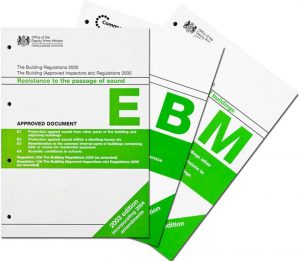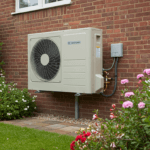 Building Regs within England
Building Regs within England
Building Regulations (or more commonly known simply as Building Regs) are minimum standards for design, construction and alterations to virtually every building. They are developed by the government and approved by Parliament.
The Building Regulations 2010 cover the construction and extension of buildings and are supported by Approved Documents which set out detailed practical guidance on compliance. These building regs divided into a number of parts. Clicking on any part below will take you to the government pages for that part.
Before you start any construction you have a choice to use a private building control inspector, or the local authority to approve the building regs. If work has already started then you must use an inspector from the local authority.
You might also need building regulations approval for many alteration projects, including if you plan to:
- replace fuse boxes and connected electrics
- install a bathroom that will involve plumbing
- change electrics near a bath or shower
- put in a fixed air-conditioning system
- replace windows and doors
- replace roof coverings on pitched and flat roofs
- install or replace a heating system
- add extra radiators to a heating system
Some of these might be carried out by a registered tradesperson on the competent person scheme. This might include building regs for electrics, plumbing, windows, gas, insulation, heating, roofing, ventilation or air conditioning, renewables etc. You can check on a competent person via the Competent Person Register.
However you also have the choice to use an alternative person and ask building control to approve the works carried out. A good example of this might be glazing. You can opt to use a FENSA supplier or if you are having other works checked by Building Control you can save money and get the inspector to check the new windows under building regs. The choice is yours.
You will need building control for common projects such as extensions, dormers, or larger outbuildings. You will certainly need it for changes of use from commercial to residential.
- Part A – Structure
- Part B – Fire Safety
- Part C – Site preparation and resistance to contaminates and moisture
- Part D – Toxic Substances
- Part E – Resistance to sound
- Part F – Ventilation
- Part G – Sanitation, hot water safety and water efficiency
- Part H – Drainage and Waste Disposal
- Part J – Combustion appliances and fuel storage systems
- Part K – Protection from falling, collision and impact
- Part L – Conservation of fuel and power
- Part M – Access to and use of buildings
- Part O – Overheating
- Part P – Electrical Safety
- Part Q – Security
- Part R – Physical infrastructure for high speed electronic communications networks.
- Part S – Infrastructure for charging electric vehicles
- Regulation 7 – Materials and workmanship
The government has also released a stitched together PDF of the above documents. You can download that here. However the individual documents above might be more up to date, depending upon how often they review this combined document on building regs.
Updated: 26th February 2022



